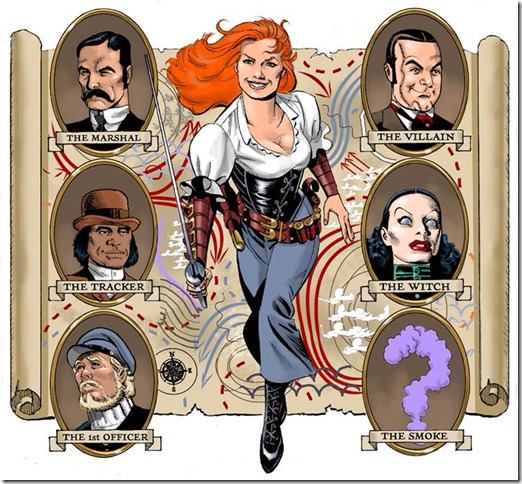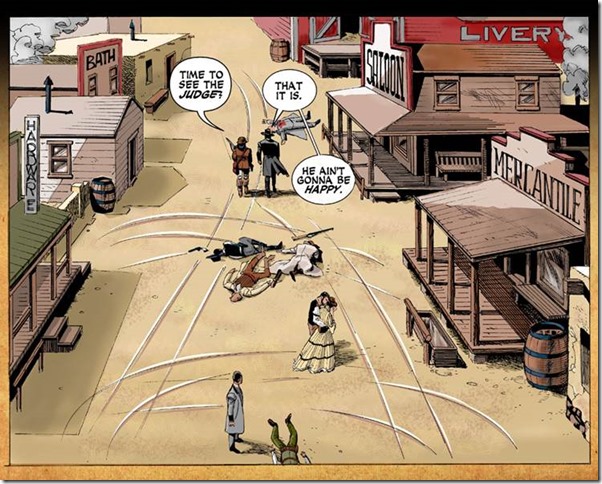TITLE: Lady Sabre and the Pirates of the Ineffable Aether
STORYTELLERS: Greg Rucka and Rick Burchette
PUBLISHER: webcomic (self published)
YEAR OF PUBLICATION: 2011-2012
PAGE COUNT : approximately 100 screens (series to date at the time of review)
WHAT I LEARNED ABOUT WRITING / STORYTELLING :
1. A bunch of pirates get in an old fashioned 1700s style ship and travel through space, real world physics be damned! It shouts “This is fantasy” from the very beginning. It’s a fantasy world unlike most I recall seeing.
2. There’s genre mashup: it’s a bit wild west, a bit steampunk, and a bit of a pirate/ Horatio Hornblower sort of thing. This shows when you create a fantasy world you can include elements of different things from different periods and cultures.
3. I liked the splash showing the cast of characters with a question mark for the mystery villain called “The Smoke”:

4. There’s a mysterious mcguffin (a mysterious locked box that only a key can open, it’s sealed with a magic spell). You just go along with it and don’t think “Oh This is a McGuffin!”
WHAT I LEARNED ABOUT ART / STORYTELLING
1. The team does a webcomic that sometimes has two screens on a page instead of one, allowing for a sort of vertical double page splash.
2. I liked how the final splash panel of this scene is a long shot with the characters walking away after killing the bad guys. You see the chaos around them:

I guess splashes are not just for big shots of people hitting things!
RECOMMENDATION: B
NOTES / REVIEW / SYNOPSIS:
This is definitely different from what Greg Rucka usually writes. He says he wanted to do a “fun” series, and it mostly works, though Lady Sabre’s cheeriness while killing people is a bit odd. Not that a swashbuckler can’t be cheerful, but she seems to take it to an extreme level- some more neutral moments or more of a range of emotional reactions to a situation might be nice. I could relate more to the grim sheriff character.

